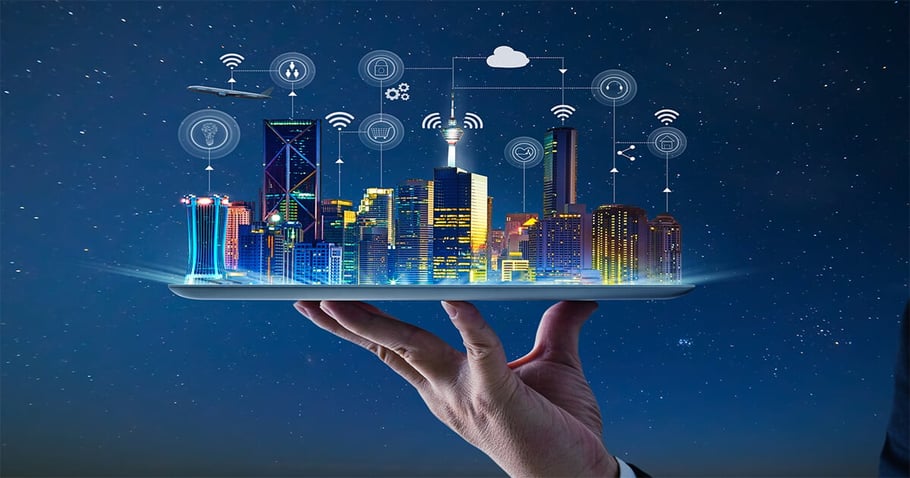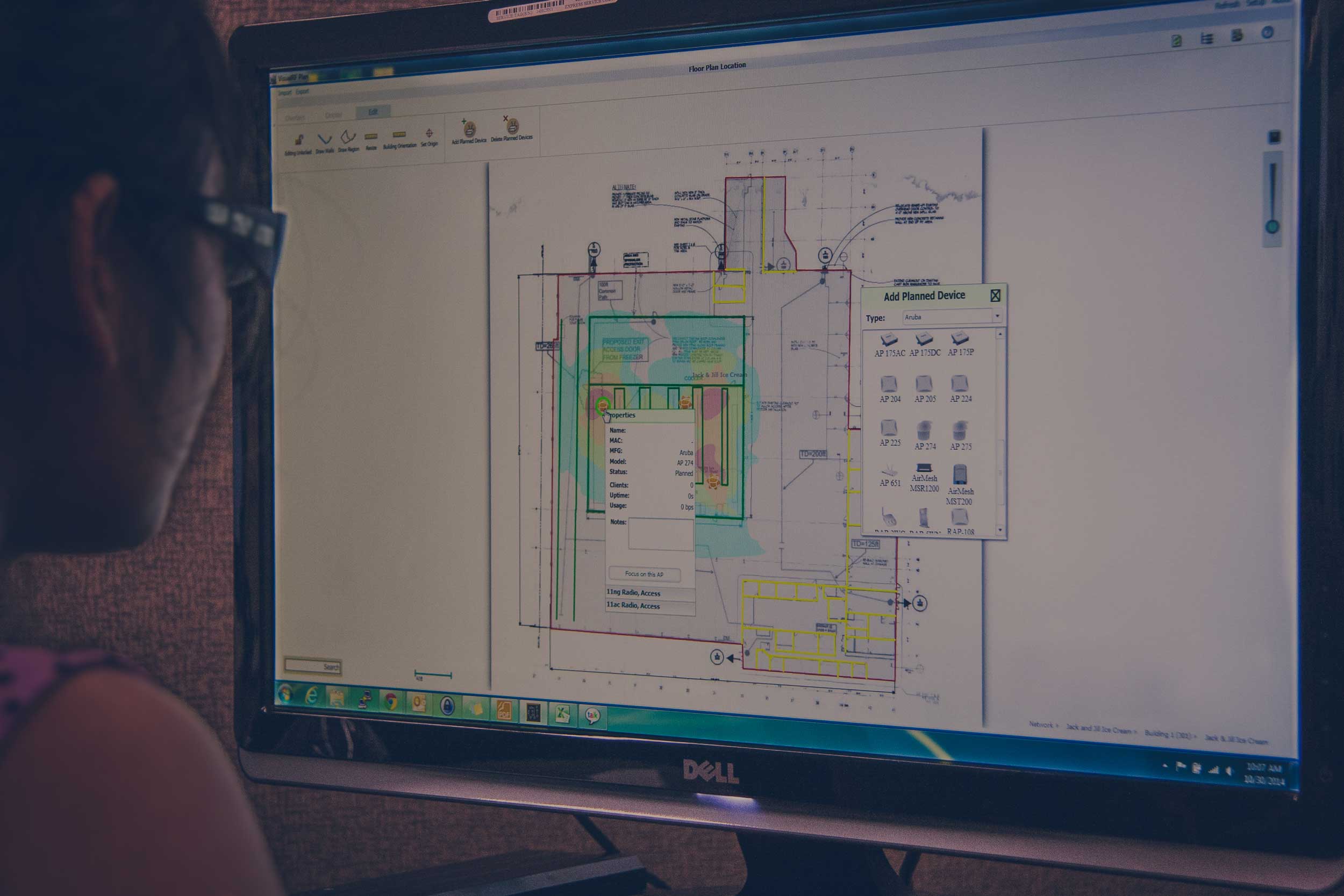
Restaurants have operated in the United States for over 200 years, after spinning off from establishments that provided both lodging and dining -- what we now know today as the hospitality industry. While restaurants aren’t exactly a bleeding edge business model, in recent years restaurant owners and operators have been increasingly turning to technology to improve the dining experience, efficiency, and profitability -- and gain a leg up on the competition.
While restaurant patrons and foodies may crave a variety of technology amenities when dining out, many of these wants and needs depend on two basic IT concepts: the Internet of Things (IoT) and free WiFi.
IoT, which TechTarget defines as “a system of interrelated computing devices, mechanical and digital machines, objects, animals or people,” is not new and has already radically changed construction, consumer electronics, healthcare, manufacturing, and transportation.
In this article, you’ll learn how IoT has already started transforming hospitality -- especially restaurants -- and what you need to do to make sure that your restaurant’s wireless network is prepared.
1. Support Mobile Ordering and Contactless Paying
Last year, according to market research firm eMarketer, about 40% of U.S. smartphone users over 14 years old made a purchase using an in-store mobile payment app.
Which are the most popular payment apps? While you’d likely guess the company that came in second place, you might be quite surprised that a restaurant’s mobile app is actually the most commonly used mobile payment method in the U.S.: Starbucks (1st place; most popular), Apple Pay (2nd most popular), Google Pay, and rounding out 4th place: Samsung Pay.
It’s no big secret that people love the convenience of ordering food on their mobile device and completing the transaction right from their smartphone: true contactless paying.
As more restaurants try to dial into the rabid loyalty that Starbucks enjoys from its customer base, expect to see more restaurants with mobile payment tablets -- way beyond the first generation kiosks seen in restaurant chains today.
And as wearable devices -- or the “things” in the IoT acronym -- become even more popular, both retailers and restaurateurs will need to be prepared to accept payments this way as well.
But there’s a big gap to fill: Today most restaurants still don’t have online ordering or mobile apps. And most still don’t accept mobile payments.
There’s a big disconnect between restaurant patrons that want mobile ordering and contactless payments vs. restaurants that offer these IT amenities. (For the most part, restaurants are lagging behind retailers)
As this kind of technology adoption becomes more widespread in restaurants, digital receipts (email and text) will become more commonplace and provide an easy way to build an email newsletter list so that restaurants can get off the paid advertising treadmill.
2. Track Trends and Predict Future Events
What do Valentine’s Day, Easter Sunday, Mother’s Day, and Thanksgiving all have in common?
They’re all hectic days of the year for many restaurant operators -- with Mother’s Day and Valentine’s Day typically leading the pack as the most popular and second most popular days of the year for dining out.
Savvy restaurant operators aren’t just aware of these macro trends. They know all of the historical trends; for example, what to expect on the third Saturday evening in May and on the morning of New Year’s Eve.
However, restaurant demand can also be impacted by weather forecasts -- everything from looming hurricanes to blizzards impacts restaurant planning.
And in much the same way that local weather forecasts impact a restaurant manager’s ability to predict future events, local community events and even school calendars can also have a dramatic impact on demand -- sometimes great, sometimes severe.
Taking all of these factors into account -- armed with better data and artificial intelligence-powered software, restaurant managers can make much smarter decisions about food ordering: What needs to be ordered? In what quantities? And by when?
This data can also help drive more informed pricing decisions including when to use company-owned digital media -- such as an email list or social media channel -- to rapidly deploy coupons, discounts, or seasonal specials.
3. Monitor Staffing Patterns
You don’t need to be a hospitality industry veteran to surmise that food costs and labor costs tend to be among the biggest and potentially the riskiest part of operating a profitable restaurant.
So regardless of whether an IoT-enabled sensor is counting patrons entering your restaurant or you’re investing in IoT technology that eliminates the need for your servers to carry around plastic swipe cards to log in to the point of sale (POS) terminal, technology matters a lot for monitoring staffing patterns.
As with other systems that will define the future of operating a profitable restaurant, when people tracking with IoT is combined with AI-driven software platforms, restaurant managers can identify potential problems before they occur. For example, would it be helpful to accurately predict when staffing plans are not aligned with the anticipated demand for a given day/week?
4. Reduce Food Waste
While understaffing usually leads to poor customer experience, eroding customer loyalty, and embarrassing online reviews, overstaffing burns cash and hurts profitability.
Besides payroll costs, restaurant managers also need to keep close tabs on their food costs -- especially food waste from lousy purchasing decisions. And just as with staffing, IoT can also help with reducing food waste.
Just as with labor, if a restaurant manager does not order enough food, servers will get a lot of backlash when informing diners that their desired item on the menu is not available.
However, if you order too much of the wrong foods, unused perishable food can spoil and become food waste. Even moderate amounts of wasted food can harm a restaurant’s bottom line.
When AI and IoT are deployed for this purpose, a restaurant manager will know their food inventory in realtime to prevent ordering too much of the wrong items. Also, these same kinds of platforms can address auto-reordering (much like WalMart has enjoyed for decades).
5. Improve Kitchen Quality, Safety, and Efficiency
What happens when an order is prepared incorrectly, and the diner sends the dish back to the kitchen? There’s a domino effect: the restaurant takes a loss on the cost of the food. Other diners’ orders get pushed back as the reorder as rushed to the front of the line. The server likely gets a smaller gratuity. The table turns over more slowly. And the restaurant risks a bad review online.
But worse yet, what if the food is undercooked or expired and still served? What if there’s cross-contamination? Or other issues in the kitchen that would make a health inspector’s skin crawl?
Kitchen quality, food safety, and overall restaurant efficiency all tend to go hand in hand.
Traditionally avoiding this risk requires great hiring, management, and processes. But what if technology could help the restaurant operator stack the decks in its favor? Where AI and machine learning improve order accuracy, IoT and sensors nearly eliminate food safety problems, and the software platform is managing the kitchen prevents almost all kitchen quality fails.
When surveyed, diners believe technology improves the restaurant experience. Restaurant owners and operators, on the other hand, use technology to improve efficiency. When deployed correctly, both parties are well served.
Can Your Restaurant’s Wireless Network Deliver the Needed Speed, Reliability, and Security?
So while you envision the future of your restaurant with larger average order sizes, quicker payment processing, less staff overall, near perfect predictions for food purchasing and team scheduling, and a safer, more efficient kitchen, there’s one key piece of infrastructure that will become just as mission-critical as utility power, HVAC, and running water.
With all of the IoT- and AI-powered technology you’re using to manage the restaurant of the future, you’ll almost certainly be generating a lot more data. Today, your restaurant’s WiFi may be seen as a nice amenity to provide for your diners. Or perhaps it’s become more critical because your point of sale system runs on your wireless network.
But what happens when pretty much every employee, customer, and “thing” in your restaurant is generating data? It becomes supercritical to make sure that your wireless network can deliver the speed, reliability, and security you need for flawless operations.
The Value of Managed WiFi and Wireless as a Service (WaaS)
Unless you’re part of a large restaurant chain or franchise operator, it’s unlikely that your company employs even a small, in-house IT staff. Most restaurants instead get their IT support from the same vendor, reseller, integrator, or managed service provider (MSP) that they purchased their systems from.
And in a perfect world, your vendor isn’t just a generalist. It has deep expertise not only in working with the hospitality industry but truly understands the significant challenges that come with designing, installing, managing, and supporting enterprise-grade WiFi in a restaurant environment.
Unfortunately, most internal IT teams and point of sale integrators usually come up short in advanced WiFi expertise. And that’s the reason why SecurEdge Networks has created a managed WiFi program specifically geared toward the needs of technology-dependent restaurant operators.
With your WiFi as a Service subscription, you’ll get everything that you need: WiFi hardware, software, and managed WiFi network services to keep your restaurant’s wireless network fast, reliable, and secure.
There’s no need to research or purchase access points and controllers, switches, or next-generation firewalls.
And you don’t have to worry about staying on top of how your WiFi network is performing because SecurEdge WiFi includes performance monitoring and guest management. No learning curve. No extra software license costs to worry about. It’s all included.
Regardless of whether you’re thinking about evenings, weekends, or holidays, most restaurants generate a big chunk of their revenue outside of traditional Monday to Friday, 9 to 5 business hours. So if that the only coverage that your internal IT team or external IT vendor can provide, that’s not going to cut it.
When there are problems, someone needs to be prepared to immediately address WiFi reliability, performance, or security any time of the day or night, any day of the year. So if your internal team doesn’t have that capability, SecurEdge WiFi can fill that gap with included 24/7 monitoring, tier 2 level support, and monthly network health reports.
And the best part for cost-conscious restaurant managers working with limited budgets? SecurEdge WiFi provides your organization with predictable pricing, no upfront costs, and a scheduled network refresh (so you don’t have to worry about your WiFi hardware becoming obsolete and turning from an asset into a liability!). All for one monthly payment.
The Bottom Line on How IoT is Transforming Hospitality
In a mobile-first world, where businesses of all shapes and sizes need to modernize to deliver on their customers’ digital expectations, the hospitality industry and restaurants, in particular, can’t afford to be left behind.
In this article, you’ve been introduced to five IoT-related trends impacting restaurant operators and how you can best prepare for the future. When evaluating each of these investment areas, be sure to consider the dining experience your customer wants along with the business outcomes you’re after.
And at the end of the day, you need to make sure your digital infrastructure, in the way of your restaurant’s wireless network, is up to the task.





![1:1 or BYOD in Schools? Which is Better for You [Infographic]](https://techgrid.com/hs-fs/hub/80068/file-2178602454.jpg)
